Beef Cattle Feeding Differences in Growing and Fattening Diets
In beef cattle farming, feed makes all the difference. The growing and finishing stages need very different levels of energy and protein. If the diet is not adjusted on time, frame growth and weight gain can suffer. Tailored rations for each stage are the key to better results and higher returns.
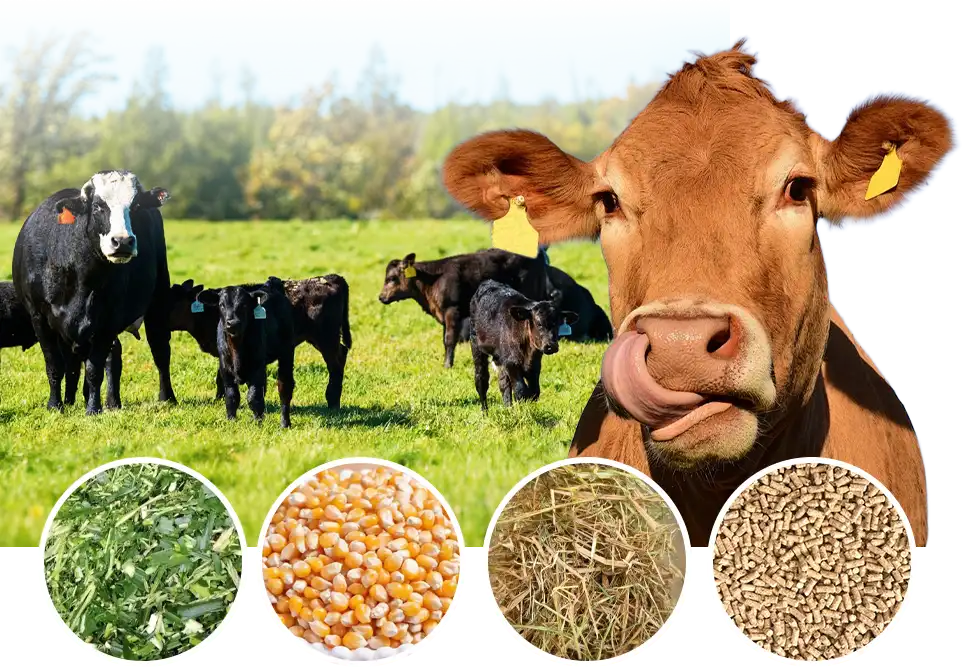
Growing Phase Feed and Nutrition
From weaning to about 300 kg, the focus is on cost effective frame and muscle growth. Cattle should gain weight mainly from forage, not rapid fat deposition.
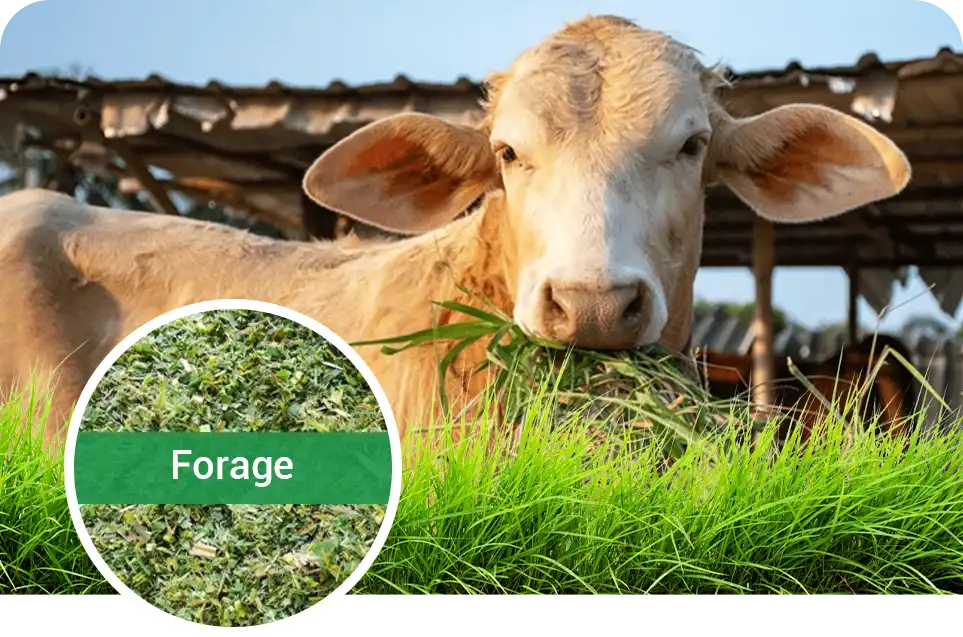
Nutrition needs in the growing phase
Daily gain is usually 0.7 to 1.1 kg (1.5 to 2.5 lb). The goal is to build a strong frame and muscle base with quality forage. Intake is about 2 to 2.5% of body weight, with moderate energy levels. Protein, minerals, and vitamins are added to balance forage gaps and keep cattle growing steadily.

- Energy
Energy is the main nutrient and the biggest cost. In this phase, rations only need to support moderate growth. High energy levels are not required as in finishing.
- Protein
Protein is essential for growth, maintenance, and reproduction. When crude protein in forage falls below 5.6%, cattle may lose weight. Supplementing protein is key when feeding low quality forage.
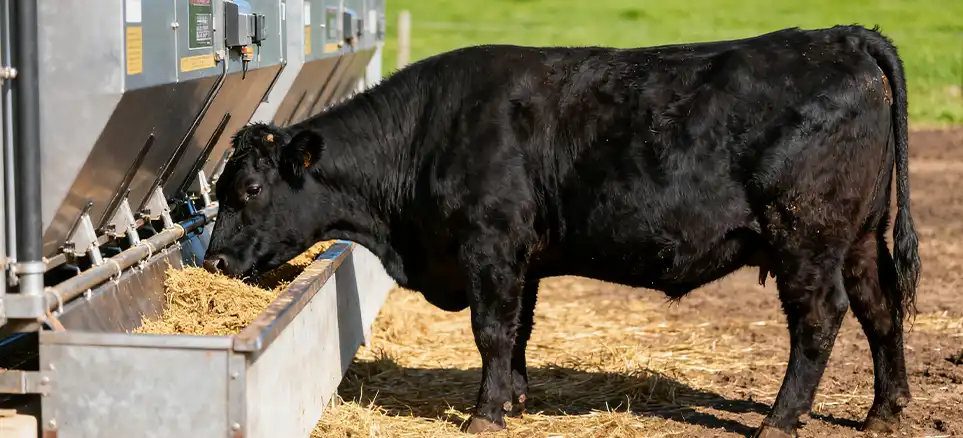
- Minerals
Mineral levels in forage vary with time and storage. Extra calcium, phosphorus, and trace elements like selenium and copper are needed to prevent poor growth, bone issues, and muscle diseases such as white muscle disease.
- Vitamins
Vitamins A, D, and E are most critical. Fresh forage supplies them, but levels drop in hay during storage and are heavily reduced in silage. Supplementation is important when feeding stored forage.
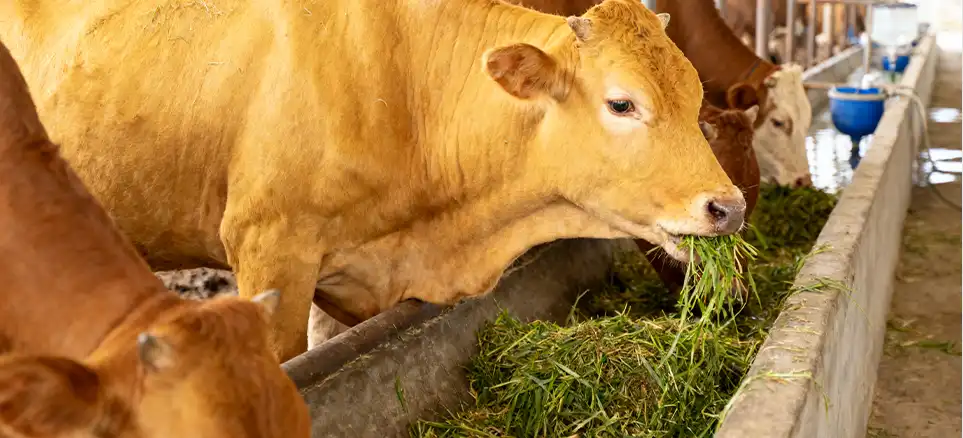
Feed composition and formulation
In the growing phase, rations are mainly forage based, with a typical roughage to concentrate ratio of about 70:30.
The foundation is quality forage such as pasture, good hay (especially legume hay like alfalfa), and silage. Concentrates are added to cover the nutritional gaps left by forage.

Reference concentrate formula
| Feed type | Recommended ratio |
| Corn silage | 35–45% |
| Quality hay or straw | 10–15% |
| Corn meal or other grains | 20–25% |
| Protein meals (soybean, cottonseed) | 10–15% |
| Wheat bran or byproducts | 3–5% |
| Mineral premix | 2–3% |
Growing phase ration and management
Forage quality changes with the season, and dry pasture often loses crude protein, lowering feed value and palatability. The nutrition of hay and silage also varies by type, maturity, and storage.
Long term reliance on a single forage may cause selective feeding and poor intake.
Recommendations
During high quality forage seasons, use a pellet mill to process forage into pellets for easier storage and transport. These pellets can serve as a supplement when pasture quality drops. Adding some pellets to the daily ration also improves palatability and helps reduce selective feeding.
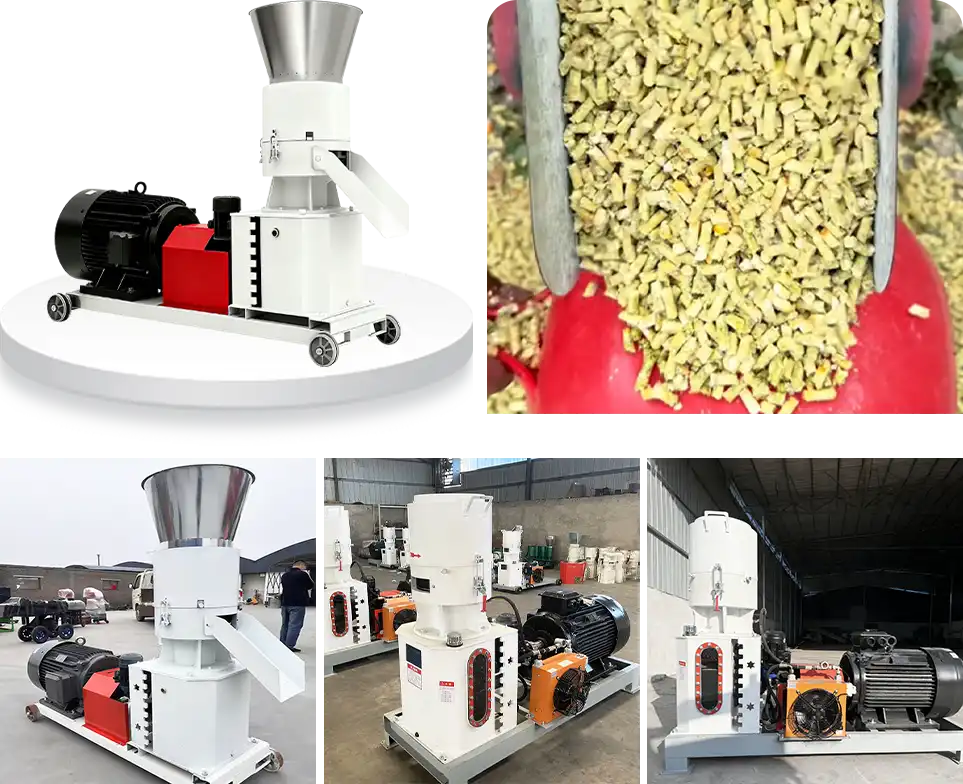
Finishing Phase Feeding
When cattle reach about 300 kg, they enter the transition stage. Feed intake rises to 2.5–3.0% of body weight to support weight gain and fat deposition.
As frame growth slows, rations should shift from protein and forage based diets toward higher energy and concentrate based diets.
Growth targets
The finishing phase aims for maximum daily gain while promoting intramuscular fat to develop good marbling. This ensures target slaughter weight and higher carcass grades.
Daily gain should reach about 1.36 to 1.81 kg (3 to 4 lb) to maximize feeding efficiency and meat value.
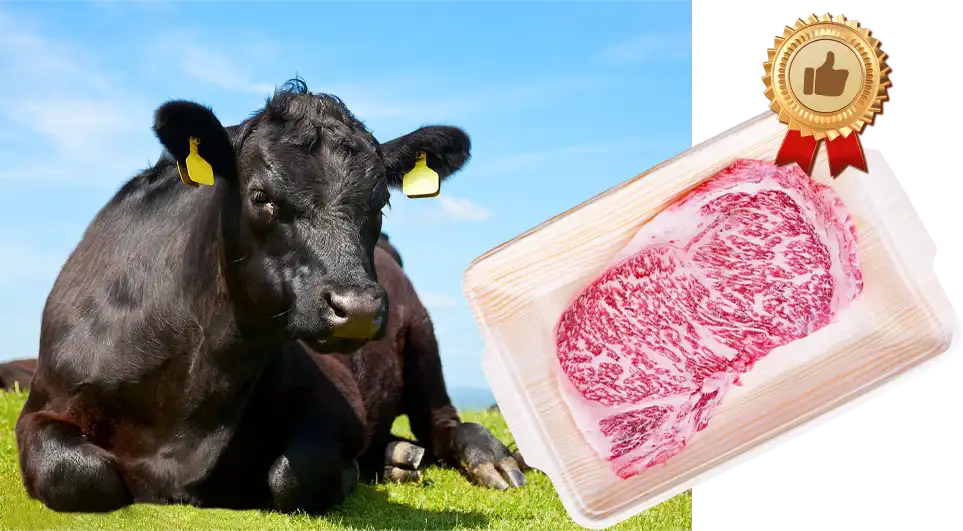
Nutritional needs
In the finishing phase, the goal is to supply energy beyond maintenance and growth, converting it efficiently into fat storage.
Rations must have the highest energy density of any production stage, mainly from grain starch. Protein remains vital to support rapid muscle growth.
Since grain based diets lack certain minerals and vitamins, extra supplementation is essential.
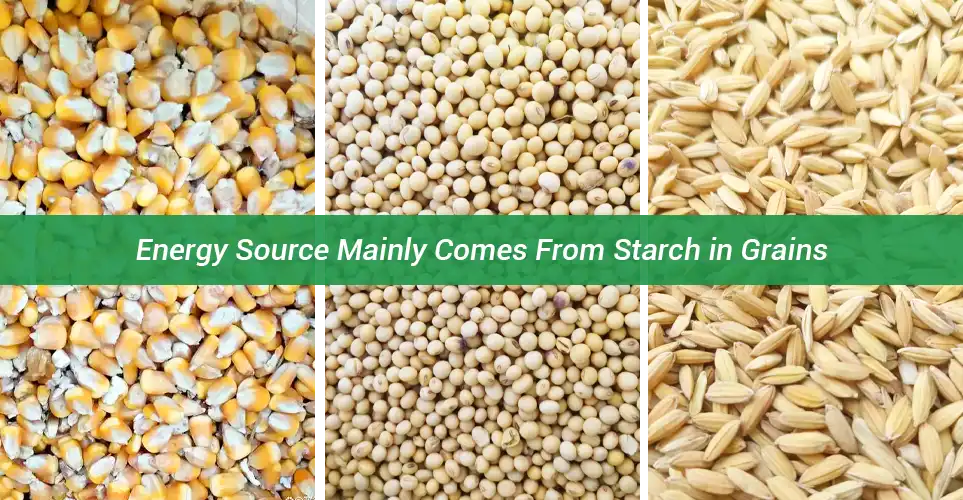
Forage to concentrate adjustment
Rations should shift gradually from the growing to the finishing phase. A step by step transition allows rumen microbes to adapt smoothly and lowers the risk of acidosis or other digestive issues.
Below is an example of a 120 day finishing ration schedule:
| Phase (days) | Concentrate | Forage | Net Energy (Mcal/kg) | Crude Protein |
| 1–30 | 50 % | 50% | 1.25 | 13.5% |
| 31–60 | 65 % | 35% | 1.35 | 13.0% |
| 61–90 | 75 % | 25% | 1.45 | 12.5% |
| 91–120 | 85 % | 15% | 1.50 | 12.0% |
*Values are for reference and may vary with breed, weight, and feed.
Key points in feeding management
- Energy and fiber balance
Higher grain and starch improve daily gain but may upset rumen pH, leading to acidosis and bloat. Too little fiber reduces chewing and saliva, while too much fiber limits intake and slows growth.
- Consistent nutrient intake
Powder or loose feed often causes selective eating. Uneven intake leads to big growth differences within the herd and lowers finishing efficiency.
- Health risk control
High energy diets and dense stocking increase digestive disorders like acidosis and bloat if rumen balance is disturbed.
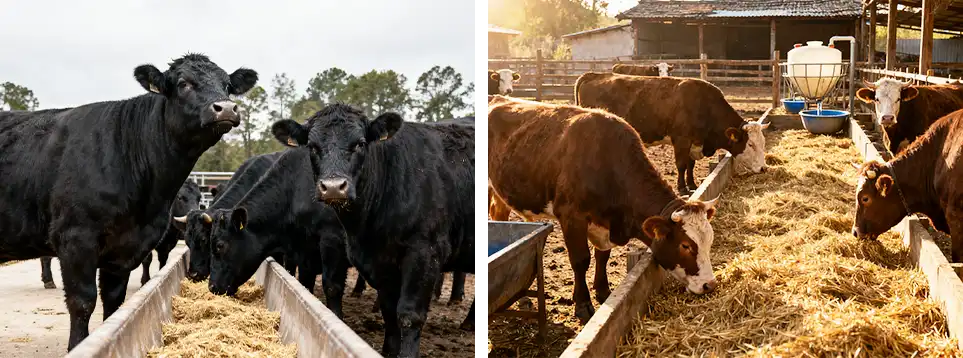
Recommendations
In the finishing phase, grains can be pelleted with a feed pellet mill. Steam heat during pelleting gelatinizes starch, improving aroma, palatability, and reducing feed sorting.
Pellets also slow starch fermentation in the rumen, helping stabilize pH and lowering the risk of acidosis and bloat.
Compared with mash or TMR, pellets are easier to transport, store, and feed accurately, boosting efficiency and simplifying daily management.
Our pellet mill is designed for efficient beef cattle feed processing. Contact us to learn more!
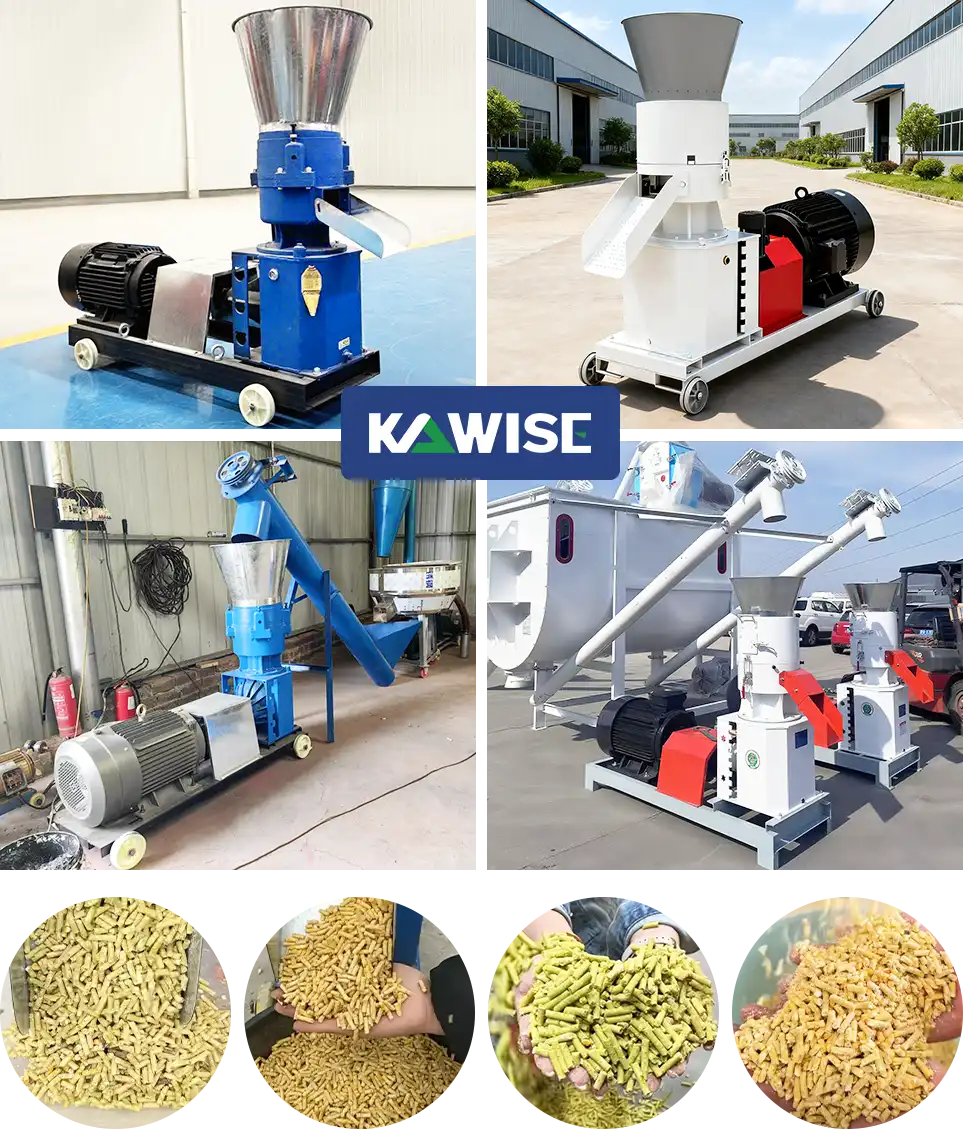
Growing and Finishing Ration Comparison
| Item | Growing (weaning–≈300 kg) | Finishing (≈300 kg–market) |
| Goal | Frame & muscle growth | Rapid gain, marbling |
| Daily gain | 0.7–1.1 kg | 1.3–1.8 kg |
| Intake | 2.0–2.5% BW | 2.5–3.0% BW |
| Crude protein | 13–15% | 10–12% |
| Energy (TDN) | 60–65% | 70–75% |
| Concentrate: Forage | 30:70 | Increase to 50:50 → 70:30 |
| Feed base | Forage with some grain | Grain based with limited forage |
| Challenge | Low protein, uneven intake | Acidosis, bloat |
| Key point | Add protein/minerals, improve forage use | Balance energy & fiber, pellets for safety |
Optimized feed structure is vital at every stage. Pelleted feed ensures balanced nutrition, easier management, and higher efficiency. Contact us for more details.

 Online Contact
Online Contact Send Message
Send Message
Need Some Help?
Contact us quickly and we will reply you within 24 hours. We will not disclose your information.